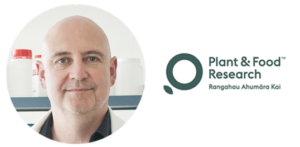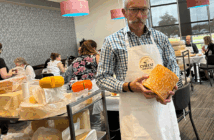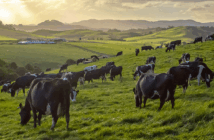By Professor Richard Newcomb, chief scientist at Plant and Food Research
Rearing fish for food is an old practice, starting around 8,000 years ago in China. But aquaculture, as we know it today, began in the 1980s. It is now the fastest-growing animal production industry in Aotearoa and globally. Given that aquaculture provides an efficient means to satisfy the expanding global demand for seafood and reduce pressure on wild fisheries, the industry is destined to grow.
The livestock farmed today originated all over the world – sheep from Iraq and chickens from Asia. By contrast, relatively few fish species have been cultured for aquaculture. Like farming, aquaculture requires high-performing stocks suited to their rearing conditions.
Diversifying species for aquaculture is important for sustainable production, particularly in light of climate change and increased pressures on land use. Globally, there is an increasing awareness of the potential for aquaculture of native species which are suited to local environments. In Brazil, more than a third of aquaculture comprises native species.
While genetic improvement programmes have contributed to productivity with plant and livestock farming, this has not been as widespread with fish, but there is lots of potential. Advances in technology also support efforts to retain genetic resources in both wild and farmed species.
As an island nation with 15 times more sea than land, Aotearoa New Zealand has enormous potential for the production of kaimoana. Historically, the sea has been integral to our cultural, social, and economic heritage. Māori were early pioneers with fishing technologies and have an enormous role to play in the development of our seafood industries into the future.
Currently, only a few seafood species are reared commercially in New Zealand – Chinook salmon, Pacific oysters and Greenshell mussels. The Pacific oysters and Greenshell mussels are bred in New Zealand by the Cawthron Institute. NIWA has been developing broodstock for hāpuku, yellowtail/haku kingfish and pāua. Plant and Food Research has been working on advanced breeding programmes for snapper/tāmure and trevally/ararra, which could be grown in diverse locations around New Zealand and could be suited to open ocean aquaculture production.
Professor Richard Newcomb is chief scientist at Plant and Food Research overseeing all aspects of science quality, strategic science, capability development and collaboration across the institute. He is also an honorary professor of evolutionary biology at the University of Auckland.
The information and opinions within this column are not necessarily the views or opinions of Hot Source, NZ Food Technology or the parent company, Hayley Media.





























































































